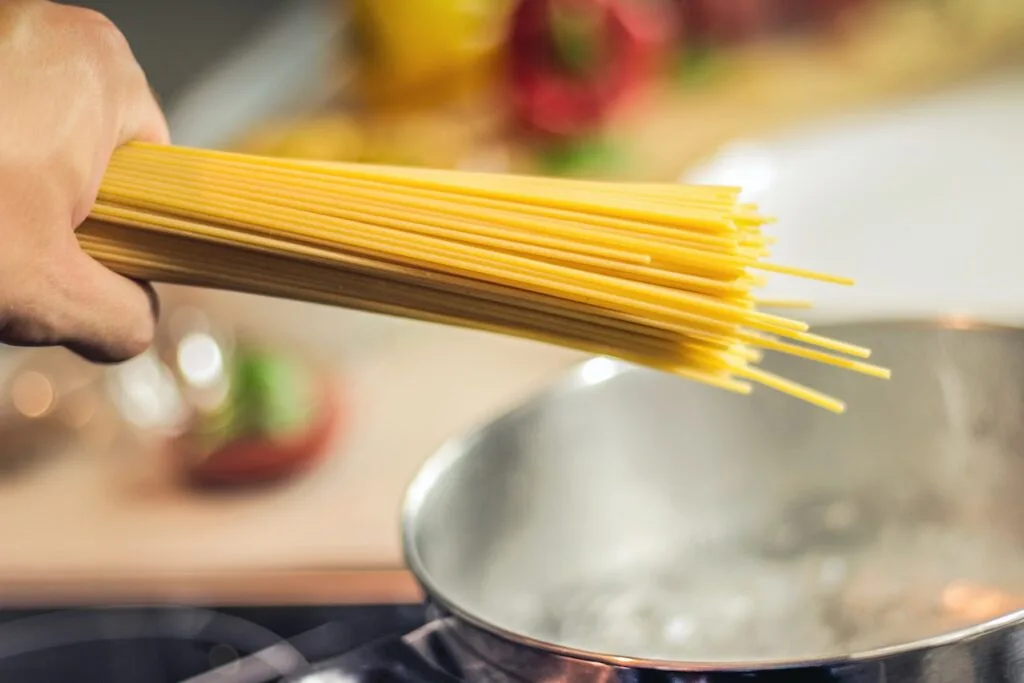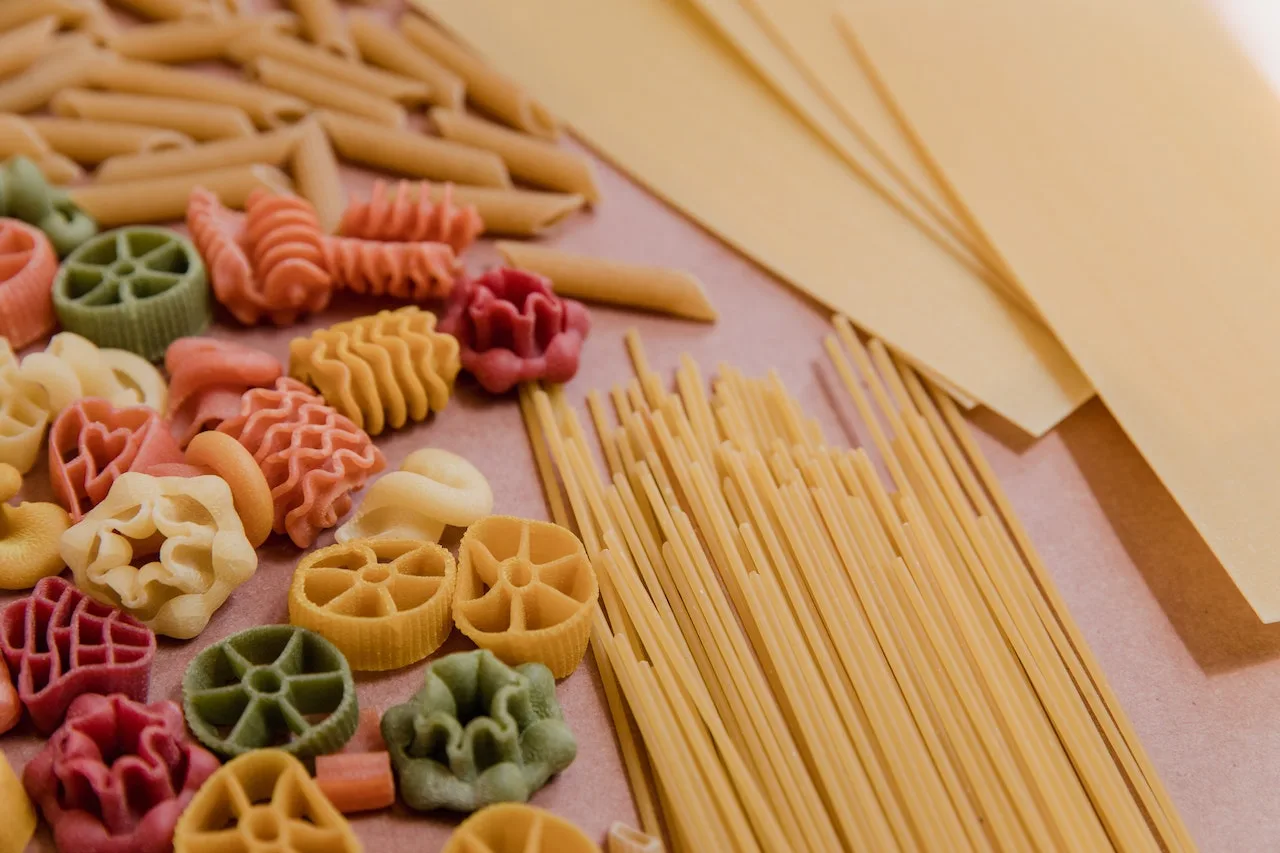Material updated ↓
There is an opinion that pasta can be eaten without damaging the figure, even for those who are trying to lose weight and are on a diet. We decided to check if this is true.
The media writes that pasta does not have to be excluded from the diet even when following a diet for weight loss (“Komsomolskaya Pravda", "Arguments and facts", Marie Claire, "Championship", "TV program", etc.), although some clarify, that this only applies to “correct” pasta. A similar opinion can be found on portals about healthy lifestyle, nutrition And Italy — country, with which pasta is primarily associated. Internet users discuss the influence of pasta on the figure in social networks, on blogging platforms, forums And services questions and answers.
Although pasta is very popular in Italy, people in this country are, on average, slimmer than other Europeans. Thus, in 2022, each Italian ate on average about 23 kg of pasta - country became world leader in the consumption of this product. According to online survey, conducted among Italians in 2022–2023 by the analytical platform Statista, 80% of respondents named pasta among the food products they regularly consumed (along with fruits and vegetables). At the same time, according to data Eurostat 2019, share of Italian adults with body mass index more than 25, indicating excess weight, was one of the lowest in Europe - 46% (for comparison, the EU average is 53%).
There are almost hundreds of types of pasta. They vary in size, shape, color, composition and other criteria. For example, Barilla, one of the world's largest pasta producers, offers about 80 types of pasta. And there are also numerous types of noodles - from buckwheat and rice to Japanese shirataki, whose calorie content is close to zero. The influence of certain types of noodles on excess weight gain is a topic for a separate analysis, but this one will be devoted specifically to pasta.
Composed of classic Italian pastes only durum wheat flour and water are included, although eggs are often added to homemade versions. In Russia, as in many other countries, there are no such strict standards regarding the flour used to make pasta. According to GOST, the content of up to 15% flour from soft varieties of wheat is permissible, however, in stores you can find pasta of lower quality, where this percentage is significantly higher. The pasta has durum varieties short glycemic index (GI) is 47, while those made from soft ones are 68. GI is an indicator of how quickly sugar from the food consumed enters the blood. The faster this happens, the faster the body produces insulin in response, which in turn causes a sharp drop in blood sugar levels, which leads to hunger. If the GI in food is low (up to 55), these processes occur gradually, which means that a person stays full longer and is less likely to overeat. An index of more than 70 is considered high; soft wheat varieties are close to this indicator, so from a dietary point of view, it is worth choosing those pasta that are made from durum varieties. They also contain more fiber, which also helps keep you feeling full longer.

According to the US Department of Agriculture, 100 grams of spaghetti, cooked without adding salt or other ingredients, contained 158 kcal. Recommended norm Calorie intake to maintain a healthy weight is 2,000 kcal per day for women and 2,500 kcal per day for men, although this varies greatly depending on the physical activity (and resulting calorie expenditure) of the individual. Thus, even if you eat a 250 g (or 395 kcal) portion of spaghetti for lunch, it will fit well into your diet and will not be a reason to greatly reduce your diet at other meals. Another question is that in this case we are simply talking about boiled pasta without any additives. If we talk about those dishes that are usually served in Italian restaurants, the calorie content may be completely different. For example, the popular carbonara pasta may contain 350, And 400 kcal per 100 g - it all depends on the specific recipe and the calorie content of the ingredients used for the sauce. A serving of such pasta weighing 250 g can “eat up” half of the daily calorie intake, which means that the likelihood of exceeding it at the end of the day without giving up other meals increases. The same applies to filled pasta, such as ravioli - the calorie content also depends on what's inside.
As mentioned above, Italy is a leader in pasta consumption, so it is not surprising that Italian experts have already wondered whether pasta consumption is associated with excess weight. In 2016, a group of scientists studied data from more than 14,000 people over 35 years of age from the Molise region. They took part in research, which focused on assessing risk factors associated with chronic diseases, including obesity. It also analyzed data from nearly 9,000 participants over 18 years of age from across the country, taken from the Italian Nutrition and Health Study, a telephone survey. It turned out that among pasta lovers there were fewer people with excess weight and other signs of obesity.

In 2019, another group of Italian researchers appreciated pasta consumption in people with type 2 diabetes and its relationship with glucose levels, obesity rates and major risk factors for cardiovascular disease. The evaluation used data from 2,562 people aged 5 to 75 years who had previously participated in the TOSCA.IT clinical trial to study the effect of glucose-lowering drugs on cardiovascular disease. Scientists have found that when consuming pasta within limits not exceeding the recommended norm carbohydrates, weight gain, and other measures of adiposity (eg, waist and hip circumference) were not observed. According to the advice of experts, in general, carbohydrates should occupy 45–65% of the daily diet, that is, with a diet of 2000 kcal per day, you can eat 225–325 g of them (in 100 g of cooked pastes - 30.9 g carbohydrates).
Researchers from other countries have also studied this topic. Thus, in 2017, Canadian scientists conducted meta-analysis existing scientific works on the connection between constant consumption of pasta and obesity. Scientists came to the conclusion that pasta not only did not contribute to weight gain, but even helped people on a low GI diet lose weight. However, the scientists noted that the effects of pasta in the context of other diets have yet to be studied.
Thus, scientific research suggests that eating pasta does not lead to excess weight gain. This is also evidenced by statistics from Italy: this country is a leader in pasta consumption, but the proportion of overweight people there is lower than the EU average. In general, pasta made from durum wheat (and in Italy, pasta is mainly made from these varieties) can truly be considered a dietary product: they have a low glycemic index, low calorie content, and contain a lot of fiber. In stores you can also find pasta made from soft wheat varieties that cannot boast of such dietary qualities, so you should carefully read what is written on the package. In addition, pasta is usually consumed as a side dish or with various sauces, so it is important to consider the calorie content of other products in the finished dish. For example, the popular pasta carbonara can hardly be considered a dietary dish, even if it is made from the “right” pasta.
Correction from 10/14/23: In a fragment of the text about a study by Italian scientists in 2019, information about the recommendations of nutritionists has been corrected: with a diet of 2000 calories, it is permissible to consume 225-325 g of carbohydrates directly, and not pasta (it contains many other substances in addition to carbohydrates). Added clarification of how many carbohydrates are contained in pasta. The previous version of the analysis is available at link.
Cover photo: pexels.com
Read on the topic:
- National Pasta Association. Pasta recipes under 300 calories
- National Pasta Association. What do you need to know about pasta and health
- Rospotrebnadzor. How to choose the right pasta?
- Did Sophia Loren ever say, “I owe everything you see to spaghetti”?
If you find a spelling or grammatical error, please let us know by highlighting the error text and clicking Ctrl+Enter.






